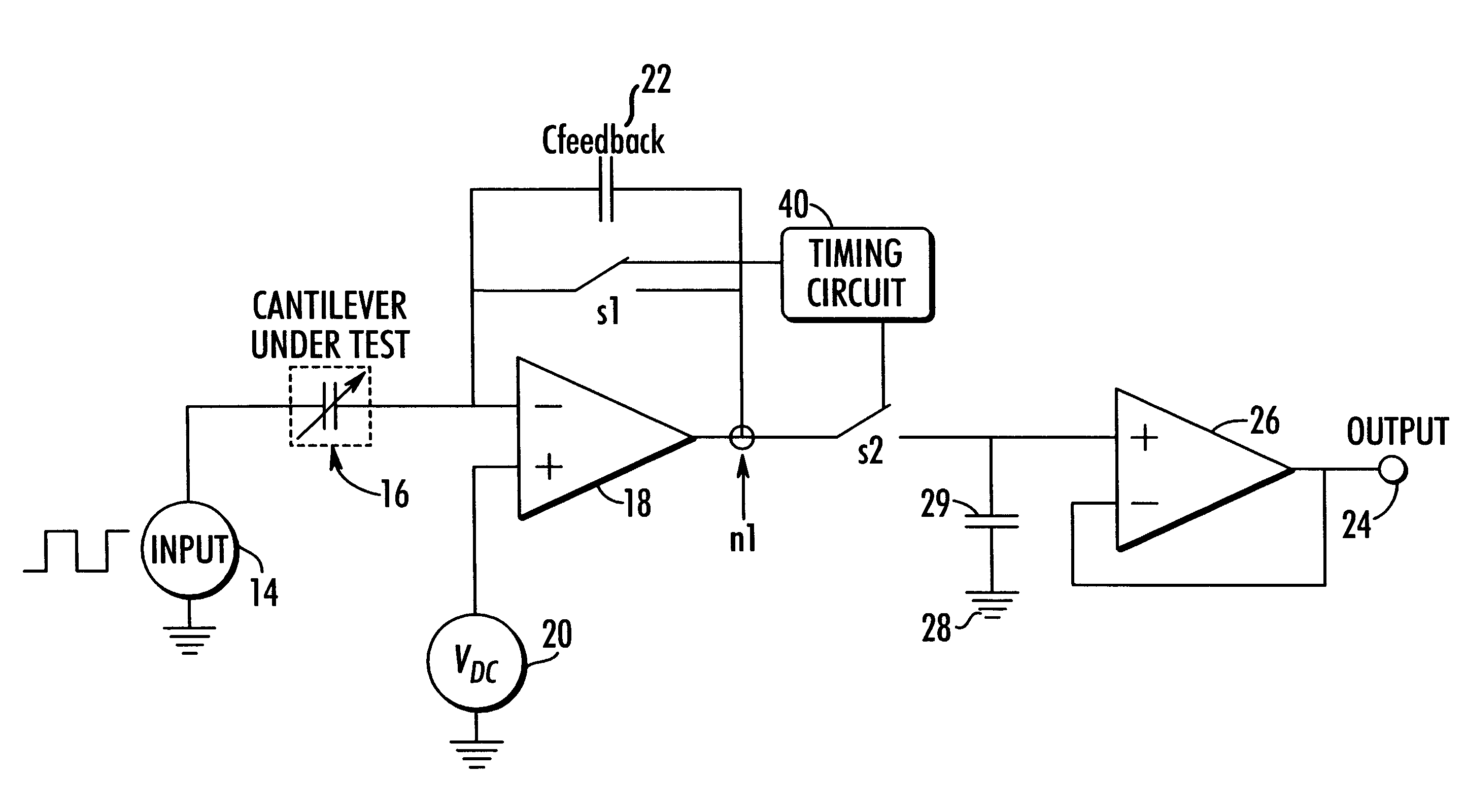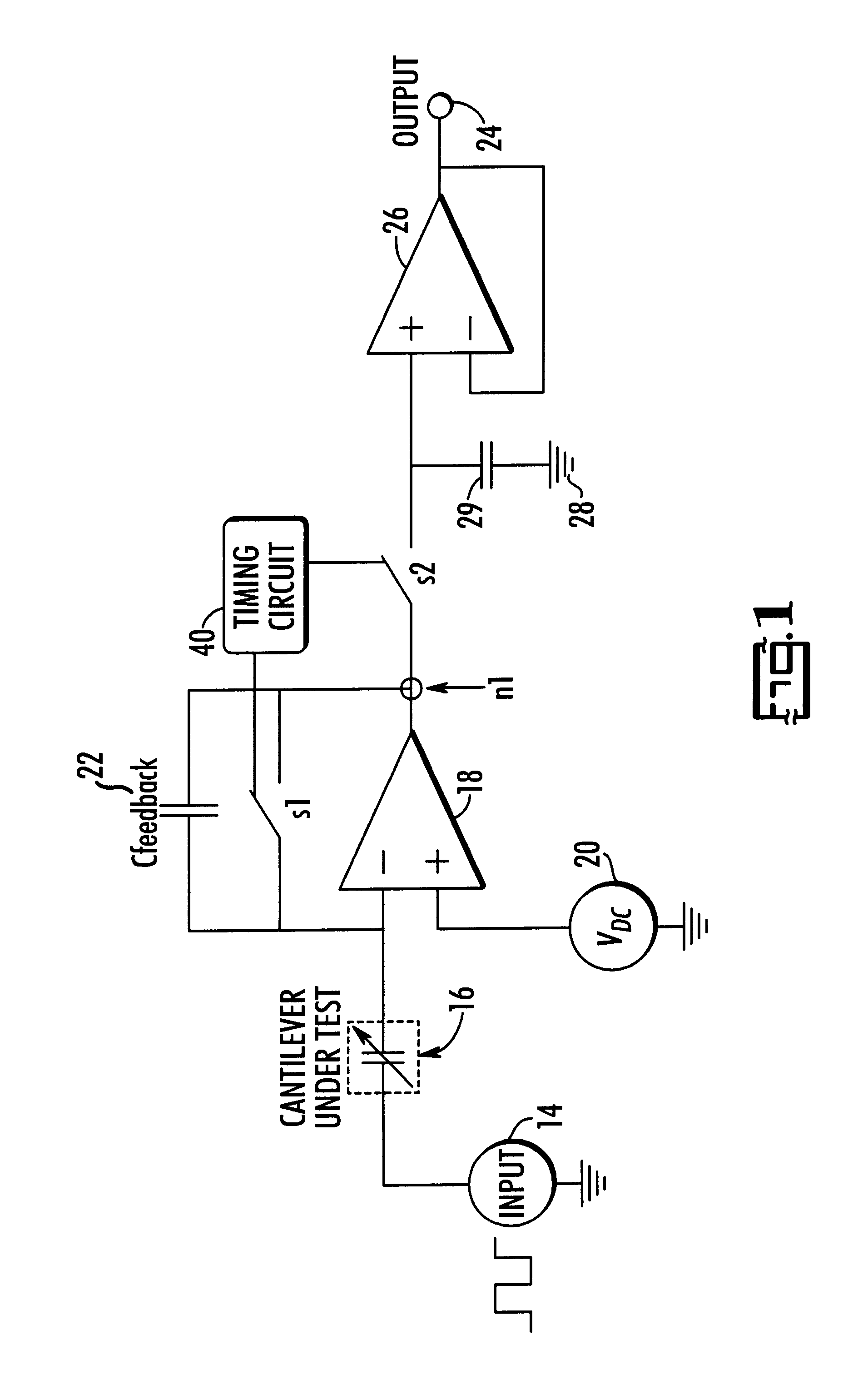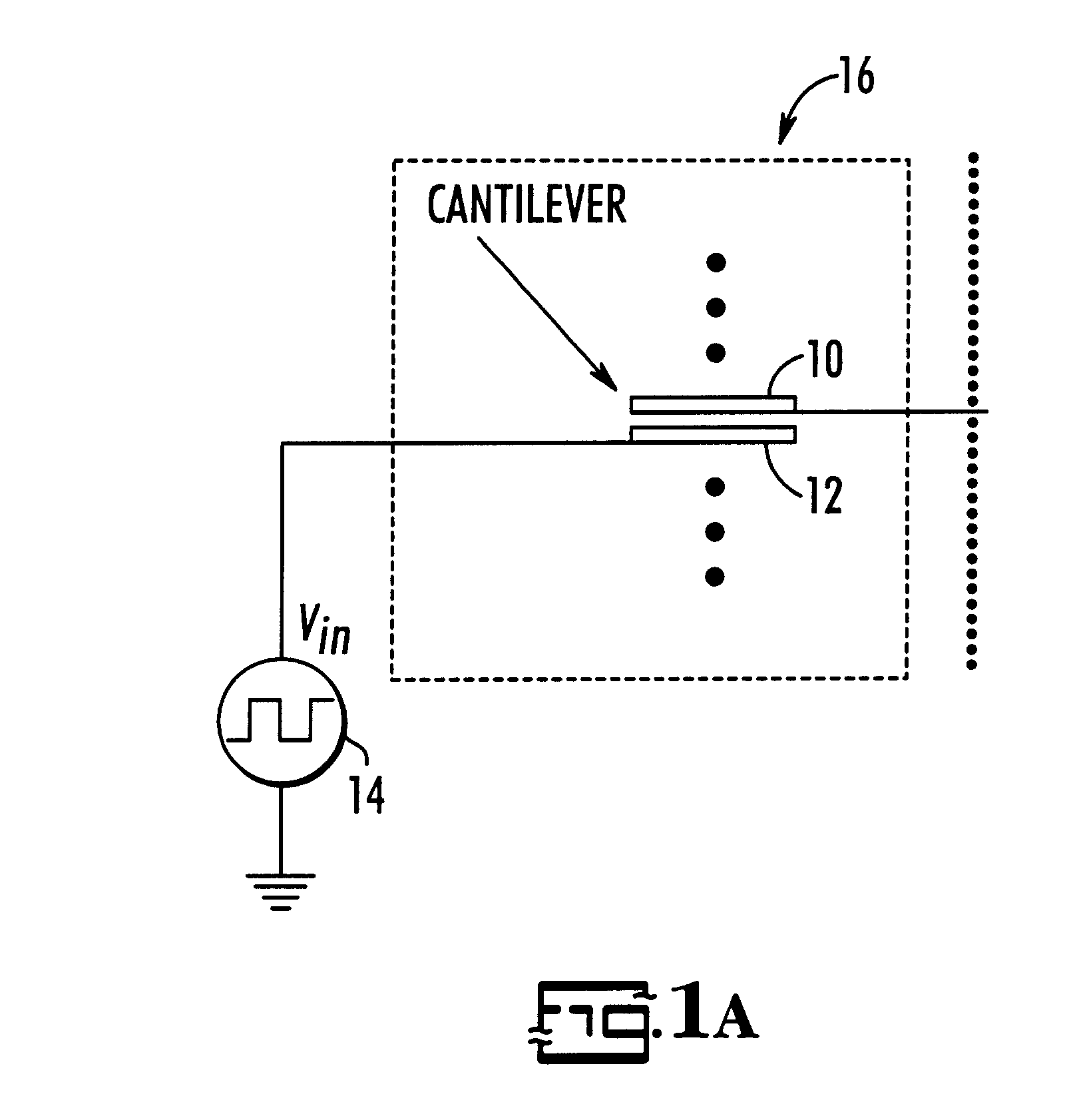Capacitively readout multi-element sensor array with common-mode cancellation
- Summary
- Abstract
- Description
- Claims
- Application Information
AI Technical Summary
Benefits of technology
Problems solved by technology
Method used
Image
Examples
first embodiment
OPERATION OF THE INVENTION
In further detailing the operation of the apparatus and describing a first embodiment of the invention, we now turn to FIG. 2. As seen in Column A of FIG. 2, the apparatus 1 of FIG. 1 is provided as an array of cantilevers, thus Channel 1 through Channel (n+1) are provided. In a preferred embodiment, a single voltage input 14 may be provided for the array of cantilevers although separate inputs for each cantilever may be utilized without compromising the results of the invention.
At the bottom of Column A, the reference cantilever channel 30 is provided. The signal from reference cantilever channel 30 is made available to the processing elements in column B of FIG. 2. The capacitance produced by the sensor element providing input to channel 30 is produced by an arrangement similar to the arrangement of sensor 16, however, the cantilever associated with reference channel 30 is a non-coated cantilever or a cantilever having a coating unaffected by or minimally...
second embodiment
the present invention is further detailed in FIG. 3. As seen in FIG. 3, Column A, apparatus 1 is provided as an array of cantilevers, thus Channel 1 through Channel (n+1) are provided. A single voltage input 14 may be provided for the array, although separate inputs may be utilized without affecting the output of apparatus 1.
At the bottom of Column A, the reference cantilever channel 30 is provided. The signal from reference cantilever channel 30 is made available to the processing elements in column B of FIG. 3, the signal first passing through a level shifting buffer positioned between Column A and Column B. The capacitance produced by the sensor element providing input to reference 10. cantilever channel 30 is produced by an arrangement similar to the arrangement of sensor 16. The cantilever associated with reference channel 30, however, is a non-coated cantilever or a cantilever having a coating unaffected by or minimally affected by the presence or component being detected.
Colu...
PUM
| Property | Measurement | Unit |
|---|---|---|
| Time | aaaaa | aaaaa |
| Electric potential / voltage | aaaaa | aaaaa |
| Area | aaaaa | aaaaa |
Abstract
Description
Claims
Application Information
 Login to View More
Login to View More - Generate Ideas
- Intellectual Property
- Life Sciences
- Materials
- Tech Scout
- Unparalleled Data Quality
- Higher Quality Content
- 60% Fewer Hallucinations
Browse by: Latest US Patents, China's latest patents, Technical Efficacy Thesaurus, Application Domain, Technology Topic, Popular Technical Reports.
© 2025 PatSnap. All rights reserved.Legal|Privacy policy|Modern Slavery Act Transparency Statement|Sitemap|About US| Contact US: help@patsnap.com



